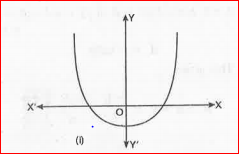A boat goes 30 km upstream and 44 km downstream in 10 hours. In 13 hours, it can go 40 km upstream and 55 km downstream. Find the speed of the stream and that of the boat in still water.Solution in Punjabi
Step by step video & image solution for A boat goes 30 km upstream and 44 km downstream in 10 hours. In 13 hours, it can go 40 km upstream and 55 km downstream. Find the speed of the stream and that of the boat in still water. by Maths experts to help you in doubts & scoring excellent marks in Class 10 exams.
Topper's Solved these Questions
- BOOK - MBDCHAPTER - PAIR OF LINEAR EQUATIONS IN TWO VARIABLESEXERCISE - EXERCISE183videos
PAIR OF LINEAR EQUATIONS IN TWO VARIABLES
- BOOK - MBDCHAPTER - INTRODUCTION TO TRIGONOMETRYEXERCISE - EXERCISE176videos
INTRODUCTION TO TRIGONOMETRY
- BOOK - MBDCHAPTER - POLYNOMIALSEXERCISE - EXERCISE51videos
POLYNOMIALS
Similar Questions
4 chairs and 3 tables cost ? 2100 and 5 chairs and 2 tables cost ? 1750. Represent this situation algebraically and graphically.
05:50View SolutionIn △ABC, right angled at A, if AB = 12 cm, AC = 5 cm and BC = 13 cm, find all the six trigonometric ratios of angle B.
04:14View SolutionThe graphs of y = p (x) are given in figure below, for some polynomials p (x). Find the number of zeroes of p (x), in each case.
 .08:16View Solution
.08:16View SolutionThe boat goes 25 km upstream and 33 km downstream in 8 hours. It can also go 40 km upstream and 77 km downstream in 15 hours. Find the speed of the stream and that of boat in still water.
06:15View SolutionA boat takes 10 hours to travel 30 km upstream and 44 km downstream, but it takes 13 hours to travel 40 km upstream and 55 km downstream. Find the speed of the boat in still water and the speed of the stream.
05:37View SolutionFormulate the following problem as a pair of equations and then find their solutions.
A boat goes 30 km upstream and 44 km downstream in 10 hours. In 13 hours it can go 40 km upstream and 55 km downstream. Determine the speed of the stream and that of the boat in still water.05:01View SolutionA boat goes 4 km upstream and 4 km downstream in 1 hour. The same boat goes 5 km downstream and 3 km upstream in 55 minutes. What is the speed (in km/hr) of boat in still water?
08:26View SolutionA boat goes 30 km upstream and 44 km downstream in 10 hours. In 13 hours, it can go 40 km upstream and 55 km downstream. Determine the speed of the stream and that of the boat in still water.
07:56View SolutionA boat covers 32 km upstream and 36 km downstream in 7 hours. Also, it covers 40 km upstream and 48 km downstream in 9 hours. Find the speed of the boat in still water and that of the stream.
05:06View SolutionA boat goes 30 km upstream and 44 km downstream in 10 hours. In 13 hours, it can go 40 km upstream and 55 km downstream. Determine the speed of the stream and that of the boat in still water.
03:48View SolutionA boat goes 12 km upstream and 40 km downstream in 8 hours. It can go 16 km upstream and 32 km downstream in the same time. Find the speed of the boat in still water and the speed of the stream
10:13View SolutionFormulate the following problems as a pair of equations and then find their solutions.
i. A boat goes 30km upstream and 44 km downstream in 10 hours. In 13 hours. In 13 hours it can go 40 km upstream and 55 km downstream. Determine the speed of the stream and that of the boat in still water.06:55View SolutionA boat goes 30 km upstream and 44 km downstream in 10 hours. In 13 hours, it can go 40 km upstream and 55km down-stream. Determine the speed of the stream and that of the boat in still water.
 05:39View Solution
05:39View SolutionA boat goes 25 km upstream and 33 km downstream in 8 hours. It can also go 40 km upstream and 77 km downstream in 15 hours. Find the speed of the stream and that of the boat in still water.
01:55View SolutionWork Problem related to the form Aax+by+Bcx+dy=k
A boat goes 30 km upstream and 44 km downstream in 10 hours. It can go 40km upstream and 55 km downstream in 13 hours. Find the speed of the boat in still water and speed of the stream.05:47View Solution

